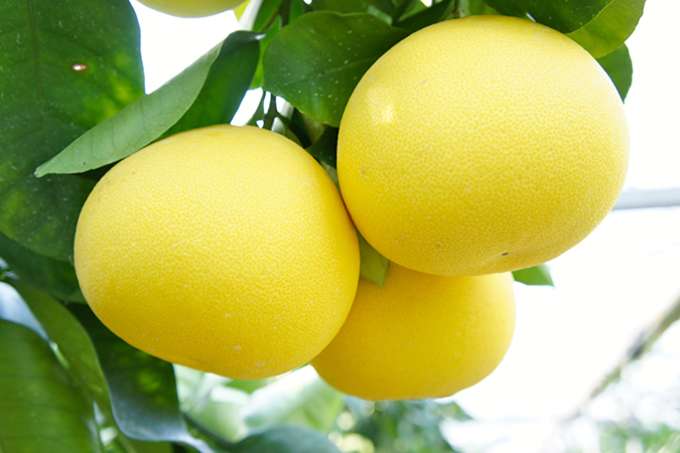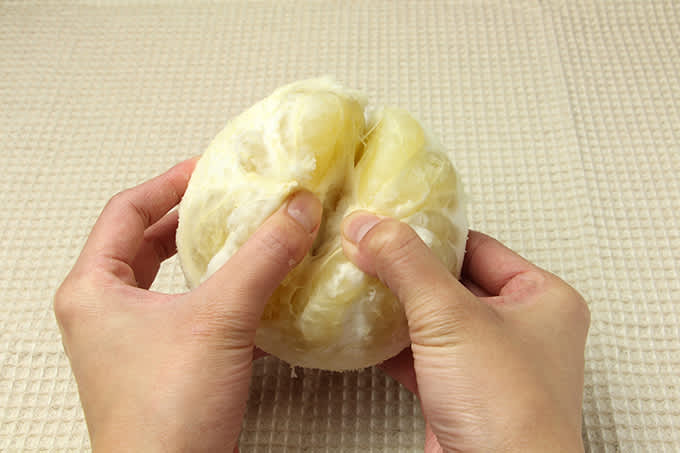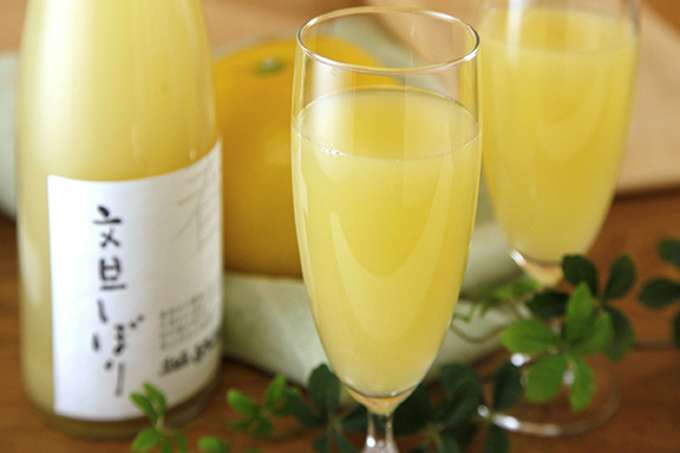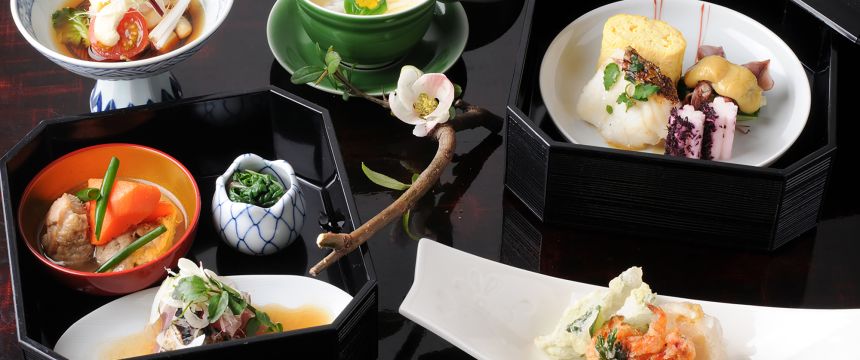Tosa and Kochi, Kochi Prefecture - Shikoku

Travel to Shikoku, the smallest of Japan’s four main islands, and discover a land of densely forested hills, beautiful beaches, and fabulous food. Well known for its seafood and udon noodles, the island is also famous for citrus fruit, producing a wide variety that includes pomelo, satsuma mandarin (tangerines), sudachi, and yuzu.
Stretching across the southern coast of the island is Kochi Prefecture, blessed with pristine rivers, exceptional hiking, and an incredible shoreline. The capital, also named Kochi, can be found along the inner part of Tosa Bay, which borders the entire southern coast. Kochi is a castle town, but beyond its bustling center you will find that concrete gives way to forest, farmland, and the mouthwatering sight of citrus orchards.
Welcome to Citrus Country

Kochi Prefecture is well known for its yuzu production, but its orchards are also home to another, much bigger citrus fruit: the pomelo. Called buntan in Japanese, pomelos are similar to grapefruits in size and boast a refreshing fragrance and slightly sour flavor.
Kochi is Japan’s largest producer of the fruit. During pomelo season, market stalls and supermarket counters overflow with it, and unattended honor-system fruit stands dot the streets. In the lead-up to fall, suisho pomelos weigh down counters while Tosa pomelos do so prior to spring.

Cross the Niyodo River on the south side of Kochi City and you’ll find yourself in the town of Tosa—motherland of Tosa pomelos. They’ve been grown in the city for almost 80 years, ever since Miyaji Fumiya, a Tosa farmer, planted a sapling at his Miya no Uchi orchard in 1943. In fact, the cultivar was developed in the area, too.

The Miyaji family continued to cultivate Tosa pomelos, laying the foundation for the area’s major citrus crop. It was the start of something big—and very, very delicious. A stone monument commemorating the start of Tosa pomelo cultivation can be found in Miya no Uchi.
Get Primed on Pomelo at Shiraki Orchard

The Shiraki Orchard didn’t start with Tosa pomelos; it’s been around much longer. Established in 1890, the orchard began by cultivating hyuganatsu, a Japanese citrus fruit. Now, they grow a wide variety of fruit, including about 40 types of pomelos, such as Tosa and suisho, and around 60 other citrus varieties.
Roughly 2,000 Tosa pomelo trees grow on a steep, south-facing slope at Shiraki Orchard. With abundant sunshine and well-draining soil, it’s the perfect location for growing citrus.

That doesn’t mean it’s easy, however. “One of the characteristics of pomelo is that they don’t pollinate well,” explained Shiraki Koichi, third-generation owner of the orchard. “We pollinate the entire orchard by hand with pollen from hyuganatsu.” As each tree has hundreds of blossoms, it’s a gargantuan undertaking.


Shiraki Orchard also grows trees in a greenhouse. Indoor Tosa pomelos are in season during December and January, while those grown outdoors are harvested from February to April. Though the indoor and outdoor pomelos look alike, their flavor is slightly different, with the greenhouse fruit boasting a somewhat stronger sweetness.


Speaking of sweetness, it changes in outdoor-grown pomelos as the season progresses, becoming sweeter as winter turns to spring. Be sure to try fruit throughout the season to enjoy the different flavors.

Have Your Cake—and Eat Some Fruit, Too

At Manger Sasa, the best of Kochi fruit is on display—just maybe not in the way you would expect. A popular café and cake shop, Manger Sasa’s display case is full of sweets that, in addition to being delicious, highlight the beauty of the ingredients themselves.
The shop, with two locations in Kochi (Takasone and Rokusenji), uses Tosa pomelos from Shiraki Orchards in some of its delectable creations, including its Buntan Tart and Buntan Gratin.
The tart features a mountain of peeled pomelo sections sitting atop a crust. Sandwiched between the fruit and crust is jam made with pomelo rind and custard cream. The custard proves the perfect match for the unique sweet-and-sour flavor of the Tosa pomelo, while the refreshing aroma of the jam provides an extra level of luxury.

A marvel to behold, the gratin uses an entire pomelo and fills it with layers of fruit, sponge cake, and custard before brûléeing the cake. The first bite of the brûlée has a slightly bitter sweetness which is followed by a refreshing sourness. Finally, the mild sweetness of the custard comes through for an incredible flavor journey.
Both items are available for a limited time during pomelo season—mid-February to the end of March—so plan your trip accordingly. Enjoy your sweets in-shop accompanied by a beverage from the drink bar for the perfect pick-me-up after a day of exploring.

Japan has an incredible number of citrus varieties, each with its own distinct flavor and aroma. In Kochi, you can sample some of the less-common kinds for a special taste experience you won’t find elsewhere. Discover the charms of pomelos as you adventure across Shikoku’s sunny south—just don’t be surprised if you can’t get enough of the fruit’s refreshing flavor.
Contact Information
Shiraki Orchard
435 Miyanouchi, Tosa, Kochi Prefecture 781-1124
Manger Sasa Takasone
20-5 Takasone, Kochi, Kochi Prefecture 780-0071
Manger Sasa Rokusenji
14-25 Rokusenji-cho, Kochi, Kochi Prefecture 780-8023
How to Get There
The city of Kochi is located on the southern coast of Kochi Prefecture, on the island of Shikoku. Kochi Ryoma Airport, which is serviced by direct flights from Tokyo and several other domestic airports, is the closest, and the downtown area can be reached by a combination of bus and train in about 40 minutes.
Recommended Itineraries
The city of Kochi offers many exciting ways to spend the day. Wander the grounds of Kochi Castle, whose buildings date to the mid-18th century. Should you visit on a Sunday, check out the city’s Sunday market, beginning from the castle’s Otemon Gate, where more than 500 stalls vie for the attention of bargain hunters. Head further afield to Mount Godaisan to find Chikurin-ji Temple and its stunning five-story pagoda. While there, admire the nearby Makino Botanical Garden. Before leaving town, be sure to sample the city’s delicacy, katsuo no tataki (seared bonito), served at many local restaurants.
Related Links
Kochi (English)
Map
Featured Cuisine
The pomelo is a large citrus fruit native to Southeast Asia. In Japan, pomelo production is concentrated on the island of Shikoku, specifically in the Tosa area of Kochi Prefecture. Pomelos have a sweet-and-sour flavor and refreshing aroma. They can be eaten as-is or made into jams and juices, as well as used in pastries and cakes.
-
Author
Author: Helen
Helen hails from a small town in Central Canada. Shortly after completing an honors degree in history, a desire to study karate in its birthplace drew her to Japan. Since arriving in 2006, she has earned her second dan in Goju-ryu karate, fallen head-first into Japanese culture by way of cross-cultural marriage, and written about Japan for a variety of publications. She loves traveling by Shinkansen, curling up under a heated kotatsu blanket, and eating anything with mochi.
All information is correct as of the time of writing.
Please check for the latest information before you travel.






















































